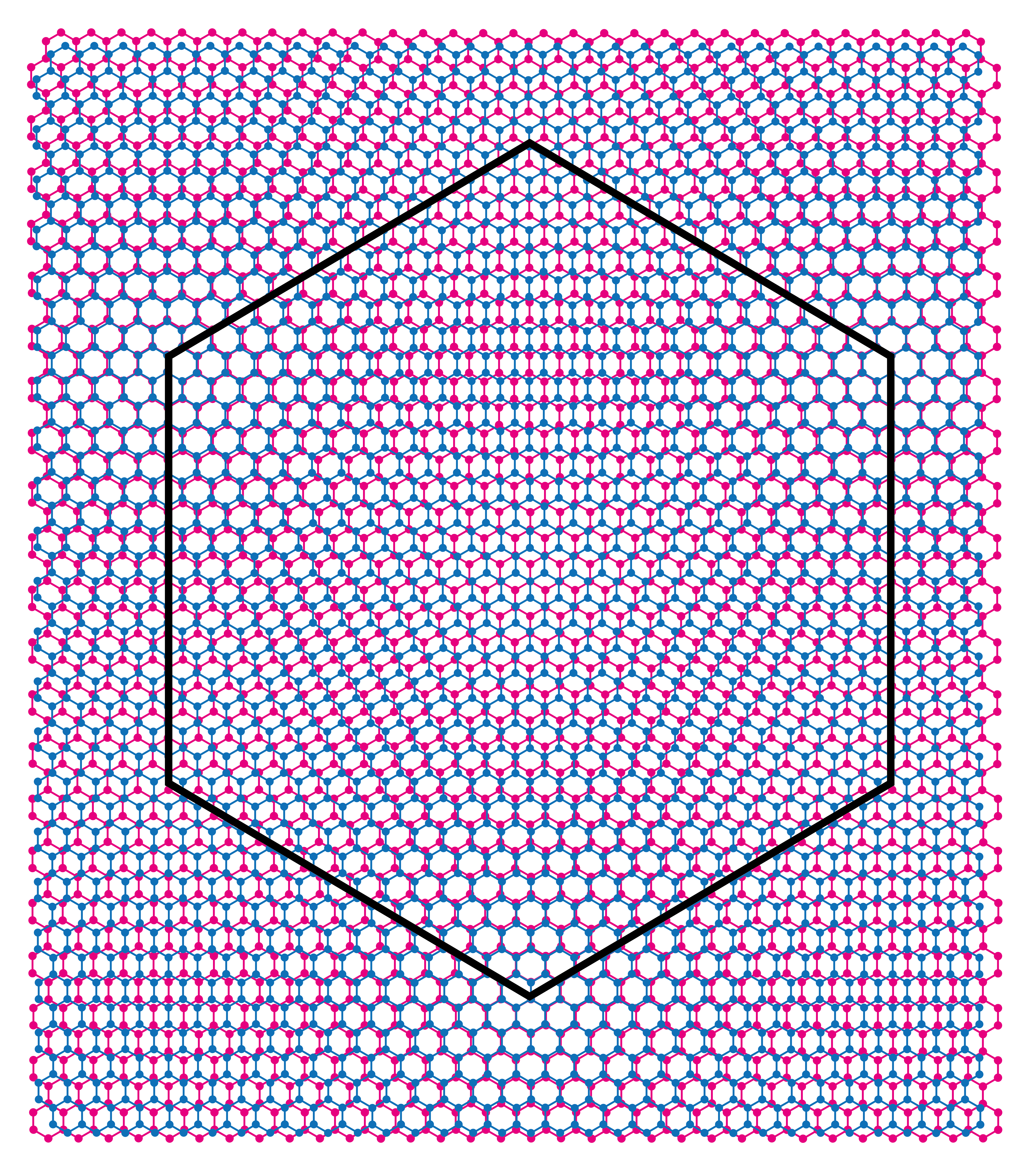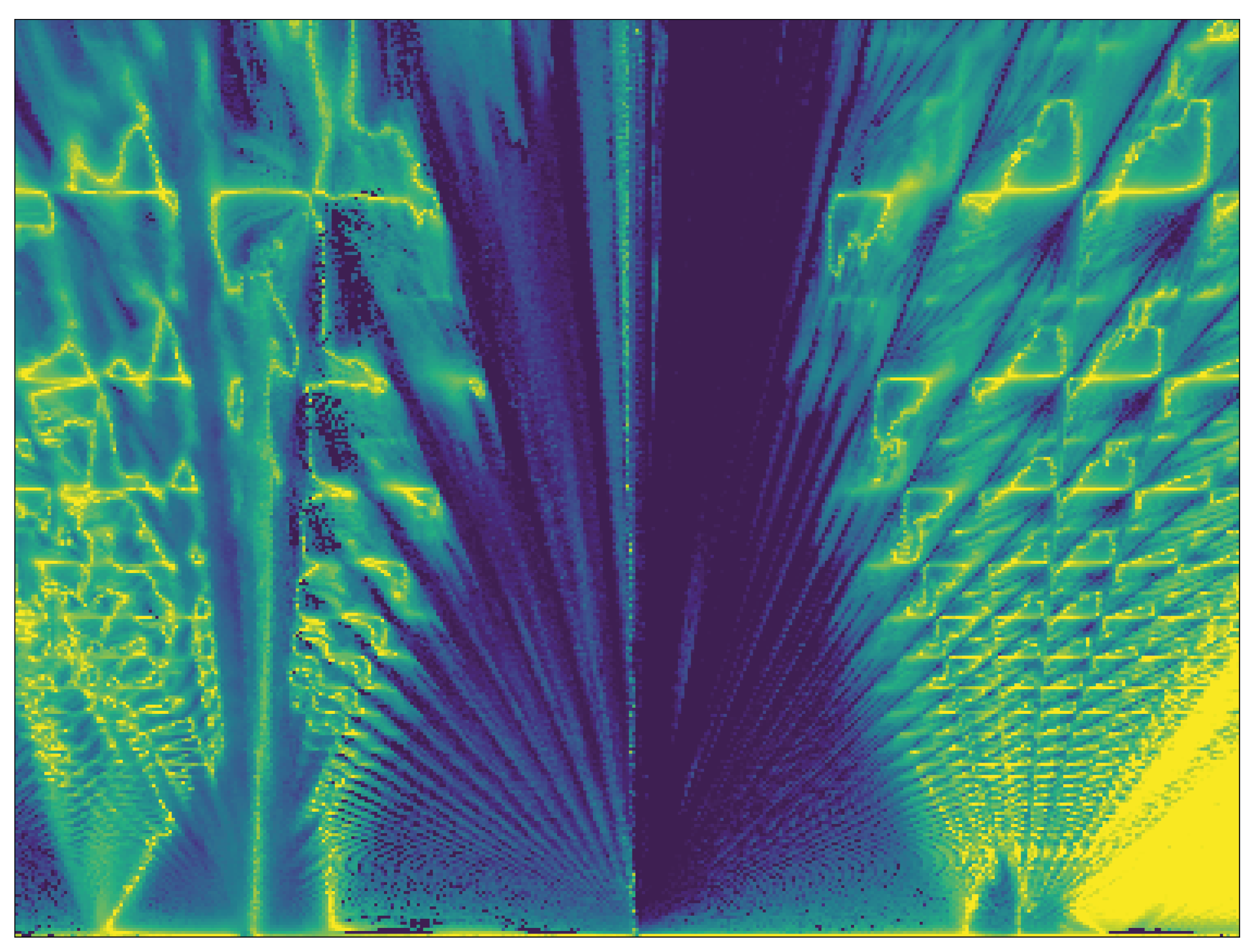This is a press release for my recent paper of high-mobility Brown-Zak fermions
A group of researchers lead by Sir Andre Geim at The University of Manchester (UK) have discovered and characterised a new family of quasiparticles named Brown-Zak fermions in graphene-based materials. The team achieved this by aligning the atomic lattice of a graphene layer to that of an insulating boron nitride sheet, dramatically changing the properties of the graphene sheet.
The study follows years of successive advances in graphene-boron nitride superlattices which allowed the observation of a fractal pattern known as the Hofstadter’s butterfly. Today the researchers report another highly surprising behaviour of particles in such structures upon the application of high magnetic fields. “It is well known that in zero magnetic field electrons move in straight trajectories and if you apply a magnetic field they start to bend and move in circles”, say Julien Barrier, a PhD student who carried out the experimental work and lead author, “in graphene aligned with the Boron nitride, they also start to bend, but if you set the magnetic field at specific values electrons have a behaviour that corresponds to straight line trajectories, as if there is no magnetic field anymore!”. “Such a behaviour is radically different from textbook physics” adds Dr Piranavan Kumaravadivel, who fabricated the graphene devices. “We attribute this fascinating behaviour to the formation of novel quasiparticles at high magnetic fields” says Dr Alexey Berdyugin who contributed to the discussion over the results, “Those quasiparticles have their own unique properties and exceptionnally high mobility despite the extremely high magnetic field”. As published in Nature Communications on 13th November 2020 (doi: 10.1038/s41467-020-19604-0), the work describes how electrons behave in an ultra-high-quality superlattice of graphene with a revised framework for the fractal features of the Hofstadter’s butterfly. Fundamental improvements in graphene devices fabrication and measurement technques in the past decade have made this work possible.
A new quasiparticle
“The concept of quasiparticles is arguably one of the most important in condensed matter physics and quantum many-body systems. It was introduced by the theoretical physicist Lev Landau in the 1940s to depict collective effects as a one-particle excitation” explains Julien Barrier “They are used in a number of complex systems to account for many-body effects.”
Until now, the behaviour of collective electrons in graphene superlattices were thought in terms of the Dirac fermion, a quasiparticle that has unique properties resembling photons (particles with no mass), that replicate at high magnetic fields. However, this did not account for some experimental features, like the additional degeneracy of the states, nor did it match the finite mass of the quasiparticle in this state. The authors propose Brown-Zak fermions to be the family of quasiparticles existing in superlattices under high magnetic field. This is characterised by a new quantum number that can directly be measured. Interestingly, working at lower temperatures allowed them to lift the degeneracy with exchange interactions at ultra-low temperatures.
“Under the presence of a magnetic field, electrons in graphene start rotating with quantised orbits. For Brown-Zak fermions, we managed to restore a straight trajectory of tens of micrometres under high magnetic fields up to 16T (500,00 times earth’s magnetic field). Under specific conditions, the ballistic quasiparticles feel no effective magnetic field.” explain Dr Kumaravadivel and Dr Berdyugin.
High mobility of Brown-Zak fermions
In an electronic system, the mobility is defined as the capacity for a particle to travel upon the application of an electrical current. High mobilities have long been the holy grail when fabricating 2D systems such as graphene, as such materials would present additional properties (integer and fractional quantum hall effects), and potentially allow for the creation of ultra-high frequency transistors, the components at the heart of a computer processor. “For this study we prepared graphene devices that are extra-large with a very high level of purity”. says Dr Kumaravadivel. This allowed us to achieve mobilities of several millions of cm²/Vs, which means particles would travel straight across the entire device without scattering. Importantly, this was not only the case for classical Dirac fermions in graphene, but also realised for the Brown-Zak fermions reported in the work.
These Brown-Zak fermions define new metallic states, that are generic to any superlattice system, not just graphene and offers a playground for new condensed matter physics problems in other 2D material based superlattices.
Julien Barrier added “The findings are important, of course for fundamental studies in electron transport, but we believe that understanding quasiparticles in novel super- lattice devices under high magnetic fields can lead to the development of new electronic devices.” The high mobility means that a transistor made out of such a device could operate at higher frequencies, allowing a processor made out of this material to perform more calculations per unit of time, resulting in a faster computer. Applying a magnetic field would usually scale down the mobility and make such a device unusable for certain applications. The high mobilities of Brown-Zak fermions at high magnetic fields open a new perspective for electronic devices operating under extreme conditions.
High resolution illustrations
Graphene and boron nitride (hBN) both present a hexagonal structure. hBN is 1.8% larger, so stacking the two will create a Moiré superlattice, with a size constant hundreds of times larger.

The following image represents different transport regime of quasiparticle in graphene and graphene superlattices: Left: an electron in a graphene sheet propagates in straight trajectories when a current is applied through the material (model of the Dirac fermion); Center: when a magnetic field is applied, perpendicular to the sheet, the electrons have circular orbits; Right: For some exact values of the magnetic field in graphene-hBN lattices, we observe Brown-Zak fermions, that have a straight trajectory despite the high magnetic field. This translates in a lower resistance of the device.

The following picture adds a doping vs magnetic field conductance map and illustrate the paper’s main result: The magnetic field is varied along the vertical axis. Horizontal Yellow streaks show propagation of Brown-Zak fermions, propagating along straight trajectories with high mobility (low resistance), whereas slanted indigo lines show the cyclotron motion around Brown-Zak fermions. The slope of these lines enabled us to get the degeneracy (and find an additional quantum number) of these new quasiparticles.

The following image combines the two:

Additional images:
Notes for editors
The paper, Long-range ballistic transport of Brown-Zak fermions in graphene superlattices (doi: 10.1038/s41467-020-19604-0), published in Nature Communications, is available from Friday, 13th November 2020. Before that, a preprint is available at: https://arxiv.org/abs/2006.15040. It should be cited as: J. Barrier et al., Long-range ballistic transport of Brown-Zak fermions in graphene superlattices, Nature Communications, Issue 11. (2020)
More information about graphene is available from www.graphene.manchester.ac. uk.
 0000-0002-6484-2157
0000-0002-6484-2157